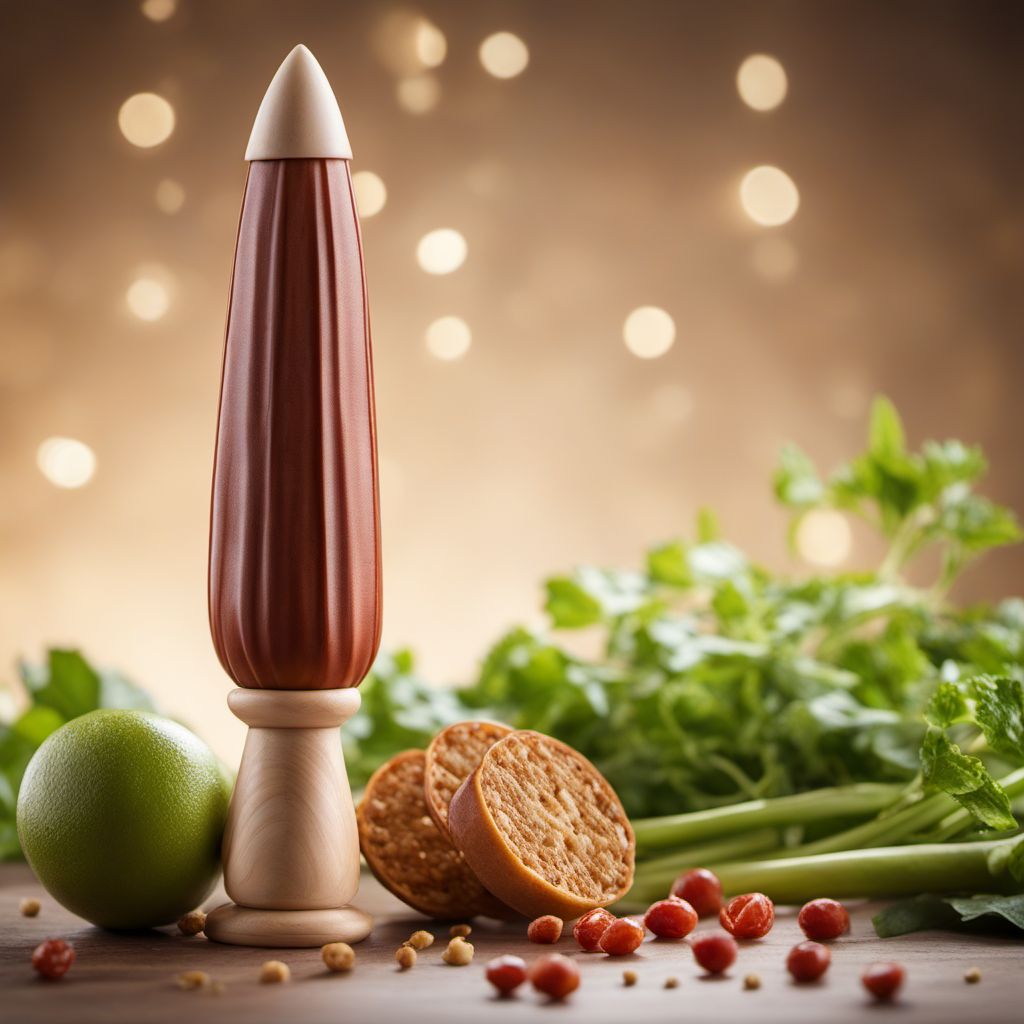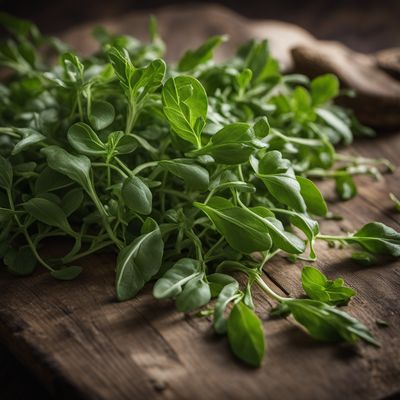
Ingredient
Roman rocket and similar-
Peppery Greens
Roman rocket is a leafy green vegetable with elongated, lobed leaves and a vibrant green color. It has a peppery, slightly bitter taste that adds a unique flavor to salads, pasta dishes, and pizzas. Its tender leaves offer a crisp texture, making it a versatile ingredient in both raw and cooked preparations.
Origins and history
Arugula has its roots in the Mediterranean region, where it has been cultivated and consumed for centuries. It was highly regarded by the ancient Romans and Egyptians for its medicinal properties and culinary uses. Today, it is widely grown and enjoyed in many parts of the world.
Nutritional information
Roman rocket is a nutrient-dense leafy green that is low in calories and rich in vitamins A, C, and K. It also provides folate, calcium, and potassium. Its peppery flavor is attributed to compounds called glucosinolates, which have been associated with various health benefits.
Allergens
There are no known allergens specifically associated with Roman rocket. However, individuals with allergies to other leafy greens, such as spinach or kale, may want to exercise caution when consuming arugula.
How to select
When selecting Roman rocket, look for fresh, vibrant leaves that are free from wilting or yellowing. Avoid any leaves that appear slimy or have a strong odor, as these are signs of spoilage. Opt for organic or locally grown arugula for the best flavor and quality.
Storage recommendations
To keep Roman rocket fresh, remove any rubber bands or ties and place the leaves in a perforated plastic bag or a container lined with a damp paper towel. Store it in the refrigerator's crisper drawer, where it can stay fresh for up to a week. Avoid washing the leaves until ready to use to prevent wilting.
How to produce
Roman rocket can be easily grown in home gardens or containers. It thrives in well-drained soil and prefers cooler temperatures. Sow the seeds directly in the garden or in pots, and ensure they receive adequate sunlight and water. Harvest the leaves when they reach the desired size, typically around 4-6 weeks after sowing.
Preparation tips
Roman rocket can be used in a variety of dishes, such as salads, sandwiches, pasta, and pizzas. Its peppery flavor pairs well with citrus, nuts, cheese, and other bold ingredients. It can be enjoyed raw as a salad green or wilted in warm dishes for a milder taste.
Substitutions
Spinach, watercress, or mustard greens can be used as substitutes for Roman rocket. While they may not provide the exact same peppery flavor, they offer similar leafy green characteristics that can complement various dishes.
Culinary uses
Roman rocket is commonly used in Mediterranean and Italian cuisines. It is a staple ingredient in dishes like rocket and Parmesan salad, arugula pesto, and as a topping for pizzas and bruschetta.
Availability
Roman rocket is widely available in most regions and countries, particularly in Europe, North America, and parts of Asia. It can be found in grocery stores, farmers markets, and specialty food stores.

